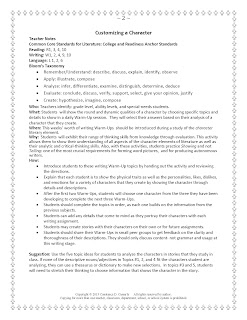Back in 1964, Barbra Streisand sang, "People, People who need people, are the luckiest people in the world," for the musical, Funny Girl. Although she was addressing how much humans need companionship from other humans in her iconic song, she could just as well have been singing to writers, too.
Obviously fiction authors need people. Where would Moby Dick be without Ishmael, The Shining without Jack, The Color Purple without Celie or Othello without Iago? Non-fiction writers' stories
would be drab and lifeless without people to create word pictures from the writers' thoughts and opinions.
The conundrum questioning whether Characters were created before Plot is as strong a controversy for writers as the Chicken vs. Egg argument is for any enquiring minds.
My story ideas have always germinated with a person, one involved in a contentious situation for sure, but still, a person. A Fine Line, my young adult novel about teen dating abuse was the result of one too many adolescent girls showing up for class with bruises. When I asked Jennifer, a fifteen-year-old with deep purple-green-yellow bruises stair-stepping up her arms what happened, she said, "My boyfriend and I had a fight... but it was my fault."
"Hold it right there," I said as I held up my hand, palm out, to ward off any more attempts she might offer to excuse her boyfriend's actions. Over the next few weeks, as we discussed teen dating abuse and possessive, obsessive relationships, my story was born. But first, first I needed a person to showcase.
This person would show herself through her thoughts, words and actions, which would be seen, heard and analyzed by the other people in the story, ergo, I needed rising action and a climax and falling
action and a resolution. Yes, I had to have a plot, too. Without one how would the character reveal the "me nobody knows" hiding beneath her bruised skin or behind her sad eyes?
And so the conundrum continues. The only way that I know to answer it is, "Character and Plot are separate by definition but so tightly meshed in action that one could not exist without the other". Like a phoenix from the ashes, a character emerges from the plot, but a plot wouldn't subsist without people to bring on the conflict.
For this post, I want to deal with the separate, but all-important development of Character. Students need to learn how to develop a character in a series of word pictures-Kodak moments- so to speak. They can do this by exploring the person forming in the attic of their brains. They need to not only be able to describe how the person looks (physical being) but to dissect their person just like marketers do. Why for example, does Person A like Crest toothpaste and person B like Aqua Fresh? What does this selection show about each individual? Why does Jill love dogs, the bigger the better, and Jack adore furry angora cats?
And if...if students are to create these Kodak moments in readers' heads, than they must learn how to Show, not Tell. Few people like to be told anything; they want to toss around the facts, details and opinions shown to them and come to their own conclusions.
I used to give students a few words and they had to show this person, such as: woman and park bench. Students new to this ultra-important Show not Tell writing commandment would respond with something like, "The old woman sat on the bench in the park." Now that was a complete sentence, but what did the reader see? Was the woman old, young, rich, poor? Was she thrilled with life or beaten down by it?
Veteran writers would pen, "Mabel clutched the iron arm of the splintered bench with her gnarled hand for support and winced as her hips creaked into a sitting position. Tears wound through the wrinkles creasing her face as she eased a stained envelope from the torn pocket of her grey sweater."
Yes, this example uses over 4 times as many words, but it creates a clearer word picture. After the author would read it aloud and write it on the board, I would ask my students to copy it down, to close their eyes and allow a picture of this woman to form in their heads, and then to write 2-3 sentence Showing more about her: Why was she so sad? Did she live alone? Where? What kind of a place? Who was the letter from? Did she cherish it or did its words fill her with dread?
A word picture will make readers ask, "More, please." It will pull them into the lives of the characters and the plot/conflict. It will make them wonder, to be thrilled or saddened or angered. It won't make them shrug with indifference and respond, "So?" as a telling sentence like, "The old woman sat on the bench in the park" does.
Today's FREE activity allows writers to unlock the secrets that make their characters unique individuals. With the five Warm-Up topics, students will learn how to customize each character with specific, focused word selection and to create word pictures by Showing, not Telling. It is aligned with Common Core Standards and Bloom's Taxonomy, and comes with a detailed page of Teacher Notes as well as a suggestion on how to use this product with literature that you are studying in class. Download it from: http://www.teacherspayteachers.com/Product/Activities-Customizing-Character-Writing-Warm-Ups-699757
How do you help students to develop character in their writing? Please share your ideas here.
Happy Teaching and Writing,






No comments:
Post a Comment